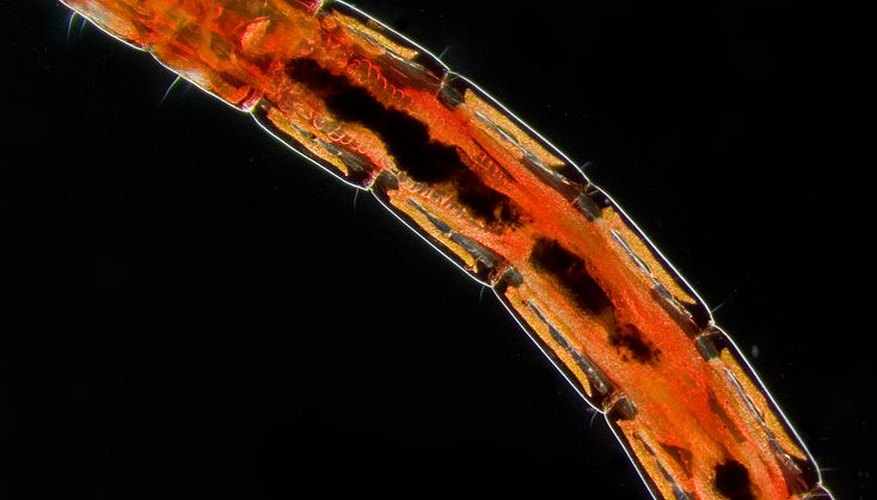Bloodworms are one stage in the life cycle of the non-biting Midge fly. The non-biting Midge, also known as chironomid, looks like a mosquito, but doesn't bite. Midges live near water and are found in streams, rivers, ditches, lakes and ponds. Midges are considered desirable insects in many settings and are a food source for fish and other aquatic life. They also help to keep waterways clean by consuming organic debris. The midge develops in a life cycle that includes four stages: egg, larvae (bloodworm), pupae and adult.
Egg
The Midge lays her eggs on the surface of the water. The eggs are in a gelatinous egg mass that may contain up to 3,000 eggs. The egg mass sinks to the bottom of the water where it will hatch in up to one week.
Larvae
After the larvae leave the egg mass, they burrow into the mud or build small tubelike structures in which to live. They will enlarge the tubes as they grow. They consume organic matter in the water and mud as they grow and also dispose of human waste in sewage plants.
Bloodworm
During the larval stage, the larvae will become pink and eventually dark red. This comes from haemoglobin in the Midge fly's blood. This iron-containing compound allows the larvae to respire in the low oxygen conditions in the muddy bottoms of the waterway.
During the bloodworm phase, the larvae will be in a C-shape. Most of the Midge fly's life is spent in this phase of its development, during which it will move itself with a swimming-like motion that includes wriggling in a figure of eight loops.
- During the larval stage, the larvae will become pink and eventually dark red.
- Most of the Midge fly's life is spent in this phase of its development, during which it will move itself with a swimming-like motion that includes wriggling in a figure of eight loops.
Pupae
Two to seven weeks after entering the larval stage, the bloodworm will cease to exist as the maturing Midge fly enters pupae while still living in its tube. Three days after entering pupae, it will swim to the surface of the water and the adult will emerge a few hours later.
Adult
The mature Midge fly, which will appear to look like a mosquito, will mate in a swarm soon after emerging. The adult fly will lay her eggs by skimming the water's surface in flight. The adult fly will never eat and will live only three to five days in this final stage of development.
